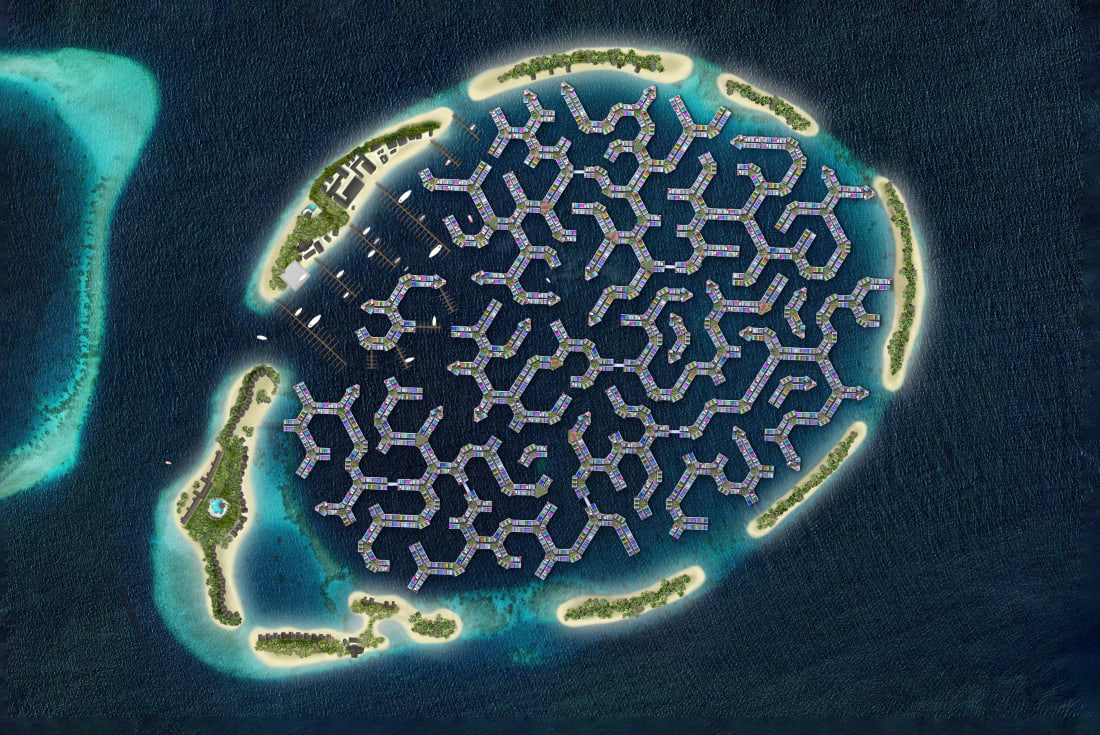
© Waterstudio.NL/Dutch Docklands via BBC News
Vocabulary:
I will read the words, meanings, and sample sentences. Then, repeat after me.
- metropolis /mi-TROP-uh-lis/
- entice /en-TAHYS/
- vista /VIS-tuh/
- lagoon /luh-GOON/
- vulnerable /VUHL-ner-uh-buhl/
[noun] – city
The mayor wants the city to be known as a food metropolis.
[verb] – to attract someone to a particular place or activity by offering something pleasant or advantageous
Advertisements are used to entice people to avail services.
[noun] – a view, especially a beautiful view from a high position
The street’s main selling point is its vista of the buildings, including its famous cathedral.
[noun] – an area of sea water separated from the sea by a reef (= a line of rocks and sand)
We can ask the guides to lead us to the secret lagoon.
[adjective] – able to be easily physically or mentally hurt, influenced, or attacked
Recent studies say that children under the age of 10 are the most vulnerable to the disease.
Article reading:
Please read the whole article. Then, I will check your pronunciation and intonation.
A floating metropolis located in the Indian Ocean with a capacity of 20,000 inhabitants is under construction. The city is only ten minutes by boat from Malé, the Maldives’ capital. Designed by the architecture firm Waterstudio, it will have 5,000 floating units that would include housing, restaurants, businesses, and schools, with canals running between them. The first units will be shown this month, with inhabitants expected to begin moving in early 2024 and the entire city finished by 2027. Waterstudio’s city is aimed at enticing locals with its rainbow-colored residences, spacious balconies, and beachfront vistas. Residents will travel by boat, walking, cycling, or driving electric scooters or wagons across the sandy streets. The goal is for the city to be self-sufficient and perform all of the tasks of a traditional metropolis. Electricity is provided, primarily generated on-site by solar panels, and sewage will be handled locally and recycled as plant manure. The city will employ deep water marine cooling instead of air conditioning, which includes pumping cold water from the deep sea into the lagoon, saving electricity.
The Maldives is one of the world’s most climate-vulnerable countries. Eighty percent of the country’s land area is less than one meter above sea level, and with levels expected to rise by a meter by the end of the century, nearly the entire country might be drowned. However, if a city floats, it may rise with the tide. According to Koen Olthuis, head of Waterstudio, this represents “new hope” for the Maldives’ more than 500,000 residents.
The Maldives is one of the world’s most climate-vulnerable countries. Eighty percent of the country’s land area is less than one meter above sea level, and with levels expected to rise by a meter by the end of the century, nearly the entire country might be drowned. However, if a city floats, it may rise with the tide. According to Koen Olthuis, head of Waterstudio, this represents “new hope” for the Maldives’ more than 500,000 residents.
Discussion Questions:
I will read each question. Then, please answer them.
- What is your favorite spot in your neighborhood? Why do you like it?
- Which places do you visit first while visiting a new city?
- If you were to visit the floating city of the Maldives, what would you do there?
- Is it wise to construct floating cities on a land mass at the risk of drowning?
- What major differences would there be between a floating city and a normal one?
Summarization
Please summarize the whole article using your own words and expressions. You will have one minute to prepare before you answer.
Describe:
Please explain the definition of each word listed below based on your understanding. You can provide example sentences if needed.
- capacity
- architecture
- residence
- spacious
- solar panel